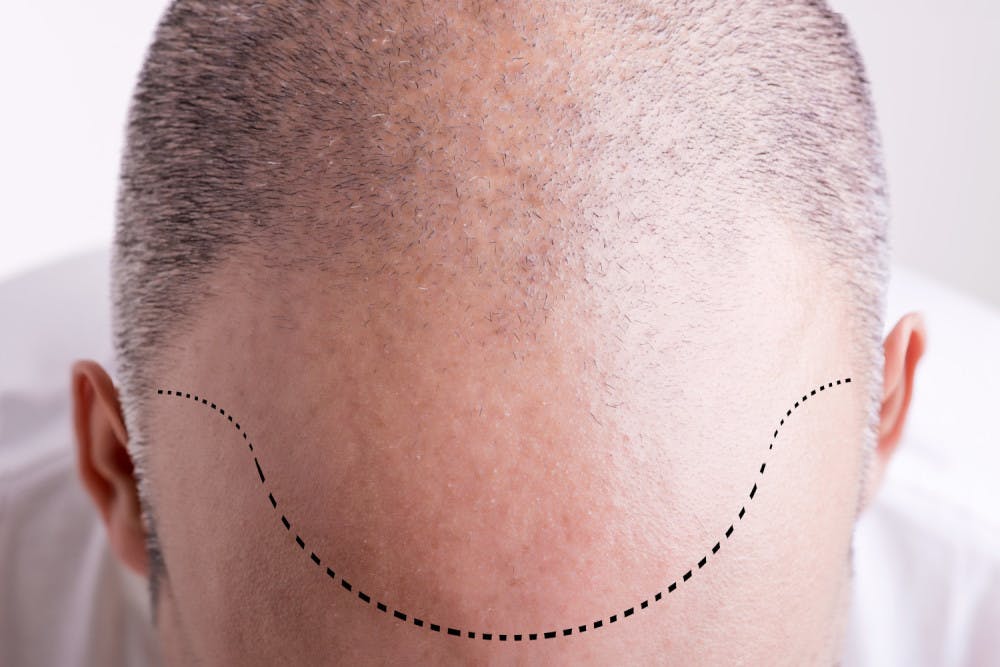Robotic Hair Transplant Surgery (ARTAS): How It Works
Thanks to modern techniques, obvious-looking hair plugs are a thing of the past. Hair transplant surgery has improved vastly over recent years and as a result it has become an increasingly popular procedure. Much of this is owing to transplant techniques becoming more sophisticated and technology playing a greater role. This is especially true when it comes to the latest innovation: The ARTAS system. Currently, the most popular hair transplant technique is follicular unit extraction (FUE). Unlike the traditional technique, follicular unit transplantation (FUT) or strip harvesting, FUE involves removing each follicular unit one at a time. Although this leaves minimal scarring and has a quicker recovery time than its more traditional counterpart, it’s also a more time consuming process, with some procedures lasting up to eight hours. Luckily, the development of the ARTAS robotic hair transplant system is tackling some of the issues faced by the FUE technique.
What Is the ARTAS System and How Does It Work?
Developed by Restoration Robotics, ARTAS is a robotic surgical hair transplantation system. It uses advanced algorithms to locate the most viable hairs for transplantation, resulting in a shorter procedure time overall compared to FUE. But, how does it work exactly? Well, once hair in the donor area — typically the back or sides of the head — has been trimmed down to make the hair follicles easier to identify and extract, a local anesthetic is administered. A device which applies tension to the scalp is then placed on the head to hold the skin securely in place. Multiple cameras then capture video images of the donor site and the algorithms kick in to identify the exit angles and density of each of the follicles. The most suitable hairs for the transplant are then selected and removed using a specialist tool known as a 1mm dermal punch. During this process the surgeon can make adjustments so that hairs are harvested in a way that produces a natural looking result. After the follicular units have been dissected, the surgeon will then transplant them into the patient's recipient area manually.

Who Is Eligible For ARTAS?
ARTAS is a minimally invasive technique that can cater to a number of different hair colors and types. It’s most commonly used on people with straight, black or brown hair. However, those with curly or lighter colored hair can also make use of this robotic hair transplant technique. The ARTAS system is intelligent and, if treating a patient with curly hair for instance, it will adjust it’s harvesting technique and equip the robot with wider needles to fit the hair follicles that are to be extracted. This allows it to cater to the curvature of curly hair follicles, keeping them healthy and safe for transplantation. Although this robotic hair transplant is designed to cater to dark hair, those with light colored hair can also partake in this treatment. In these cases, hair is dyed to give it a darker color, allowing the ARTAS system to then harvest the hair follicles in the same way as described above.
ARTAS Hair Transplant Recovery Time
Recovery time after a robotic hair restoration surgery is generally shorter and more comfortable in comparison to traditional methods. Patients usually go back to their daily activities after 1-2 days. Growth within the transplanted hair typically begins after three days, during which time you may need to treat the implanted area with a special saline salt solution. Your doctor will discuss the post-treatment care with you prior to your transplant and you can also contact your Qunomedical Patient Manager if you’re unsure about anything.
What Are the Advantages of the ARTAS Hair Transplant System?
There are a few important advantages worth noting when it comes to comparing ARTAS to other hair transplant techniques. These include:
A reduced harvesting time.
An increase in the accuracy of the hair follicle harvesting.
An increase in survival rates for the harvested hair follicles.
While this robotic hair transplant is able to provide outstanding results, the overall outcome is also dependent on the ability of the doctor performing the treatment. That’s why Qunomedical employs a thorough vetting process, to select high-quality, affordable hair transplant doctors. Our worldwide selection allows patients to rest easy knowing that they’ll be receiving the best possible care, at a fair price.
Find the Right Specialist at a Fraction of the Cost
Qunomedical only lists clinics and doctors that have been thoroughly vetted with quality and affordability in mind. Contact us for your 100% free, non-binding assessment.
Disclaimer
The information in this article is for educational purposes only and does not replace medical advice. Always consult your doctor before starting any treatments.

Patient manager
Frieda
Your personal Patient Manager
Let's talk
Still unsure? Feeling overwhelmed? Talking to a real person can give you the guidance and reassurance needed. You don’t have to do it alone. Let’s find the right doctor together.
